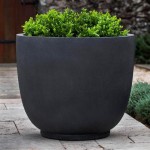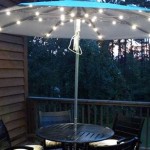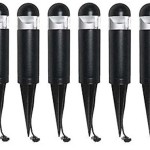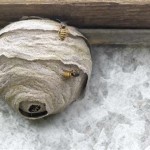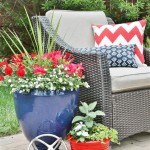How To Make Fabric Suitable For Outdoors
Fabrics used outdoors are subjected to a range of environmental stressors that can compromise their integrity and functionality. Sunlight, moisture, temperature fluctuations, and potential exposure to mold and mildew all necessitate specialized treatments and construction techniques to enhance durability and prolong the lifespan of outdoor textiles. This article outlines methods for improving the performance of fabrics intended for outdoor use, covering aspects from fiber selection to finishing processes.
Fiber Selection and Construction
The foundation of any durable outdoor fabric lies in the selection of appropriate fibers. Natural fibers, while often comfortable and aesthetically pleasing, possess limitations in outdoor environments. Cotton, for example, is absorbent and prone to mildew, making it unsuitable for prolonged exposure to moisture. Similarly, silk, while strong, is susceptible to degradation from sunlight. Synthetic fibers generally offer superior performance in outdoor applications due to their inherent resistance to environmental elements.
Polyester is a widely used synthetic fiber due to its excellent resistance to UV radiation, stretching, and shrinking. It is also relatively inexpensive and easy to dye, making it a versatile option for a range of outdoor applications, including patio furniture cushions, awnings, and boat covers. While polyester is water-resistant, it is not completely waterproof, and may require further treatment for optimal water repellency.
Acrylic fibers are known for their exceptional colorfastness and resistance to fading, even after prolonged exposure to sunlight. This makes them a popular choice for outdoor furniture upholstery and awnings, where maintaining vibrant colors is essential. Acrylic fabrics are also relatively resistant to mildew and moisture, enhancing their overall durability in outdoor environments. However, they may be less abrasion-resistant than other synthetic fibers.
Olefin fibers, like polypropylene and polyethylene, are lightweight, strong, and highly resistant to moisture, mildew, and staining. They are also relatively inexpensive and can be recycled, making them an environmentally friendly option. Olefin fabrics are commonly used in outdoor rugs, carpets, and upholstery where durability and resistance to staining are paramount. While olefin fibers exhibit good UV resistance, they may be more susceptible to heat damage compared to other synthetic fibers.
Nylon is a strong and durable synthetic fiber that offers excellent abrasion resistance, making it suitable for applications that require high wear and tear, such as outdoor gear and equipment. However, nylon is less resistant to UV degradation than polyester or acrylic, necessitating UV-resistant coatings or treatments for prolonged outdoor use. Nylon is also highly absorbent, which can lead to mildew growth if not properly treated.
The construction of the fabric also plays a significant role in its performance. Tightly woven fabrics generally offer greater durability and resistance to water penetration compared to loosely woven fabrics. Different weave patterns, such as plain weave, twill weave, and basket weave, can impact the fabric's strength, drape, and abrasion resistance. For outdoor applications, tightly woven fabrics with a high thread count are generally preferred.
Furthermore, the use of specialized yarns, such as solution-dyed yarns, can improve the colorfastness and durability of outdoor fabrics. Solution dyeing involves adding pigment to the polymer melt before the fiber is extruded, resulting in a color that is integral to the fiber itself. This method offers superior color fastness compared to conventional dyeing methods, where the dye is applied to the surface of the fabric.
Water Repellency and Waterproofing Treatments
Protecting fabrics from water damage is crucial for outdoor applications. Water can weaken fibers, promote mildew growth, and cause unsightly stains. Several treatments can be applied to fabrics to enhance their water repellency or waterproofness. The choice of treatment depends on the desired level of protection and the intended use of the fabric.
Durable Water Repellent (DWR) finishes are commonly applied to fabrics to create a hydrophobic surface that repels water. DWR treatments typically consist of fluoropolymers or silicone-based compounds that coat the individual fibers, causing water to bead up and roll off the fabric surface. DWR finishes are effective at preventing water from penetrating the fabric, but they are not completely waterproof and may lose their effectiveness over time due to abrasion and washing. Reapplication of DWR treatments may be necessary to maintain optimal water repellency.
Waterproof coatings, such as polyurethane (PU) or polyvinyl chloride (PVC), provide a higher level of protection against water penetration. These coatings form a continuous layer on the fabric surface, preventing water from passing through. Waterproof coatings are commonly used in applications where complete protection from rain or moisture is required, such as tents, tarpaulins, and rain gear. However, waterproof coatings can reduce the breathability of the fabric, which can lead to condensation buildup inside the garment or enclosure.
Waterproof breathable fabrics combine a waterproof membrane or coating with a breathable fabric layer. These fabrics allow water vapor to escape from the inside while preventing water from entering from the outside, providing a balance of protection and comfort. Waterproof breathable fabrics are commonly used in outdoor apparel, such as rain jackets and pants, where breathability is important to prevent overheating during physical activity.
Seam sealing is another important step in waterproofing outdoor fabrics. Seams are potential points of water entry, so sealing them with waterproof tape or sealant is crucial for ensuring complete water protection. Seam sealing involves applying a strip of waterproof tape over the seams and then heat-sealing it to the fabric, creating a watertight barrier.
UV Protection and Antimicrobial Treatments
Exposure to ultraviolet (UV) radiation from the sun can cause significant damage to fabrics, leading to fading, discoloration, and fiber degradation. Protecting fabrics from UV damage is essential for prolonging their lifespan and maintaining their appearance. Several methods can be used to enhance the UV resistance of outdoor fabrics.
UV-absorbing finishes are applied to fabrics to absorb or reflect UV radiation, preventing it from reaching the fibers. These finishes typically contain UV absorbers or UV reflectors that block or scatter UV rays. UV-absorbing finishes can significantly reduce the rate of fabric degradation caused by sunlight. Many synthetic fibers, like polyester and acrylic, already possess inherent UV resistance; however, further treatment can enhance their protective capabilities.
The use of UV-resistant dyes and pigments can also improve the UV protection of fabrics. UV-resistant dyes and pigments are less likely to fade or degrade when exposed to sunlight, helping to maintain the fabric's color and appearance over time. As mentioned previously, solution-dyed yarns offer superior colorfastness compared to conventional dyeing methods due to the pigment being integrated into the fiber itself.
Antimicrobial treatments are applied to fabrics to prevent the growth of mold, mildew, and bacteria. Outdoor fabrics are particularly susceptible to microbial growth due to their exposure to moisture and humidity. Antimicrobial treatments help to inhibit the growth of these microorganisms, preventing stains, odors, and fabric degradation. These treatments typically consist of various antimicrobial agents, such as silver ions, quaternary ammonium compounds, or zinc pyrithione.
The specific type of antimicrobial treatment chosen depends on the intended use of the fabric and the desired level of protection. Some antimicrobial treatments are more effective against certain types of microorganisms than others. It is important to select an antimicrobial treatment that is appropriate for the specific environment and application. It is also important to note that some antimicrobial treatments may leach out of the fabric over time, requiring reapplication to maintain their effectiveness. Consideration of environmental impact is also key when selecting antimicrobial treatments. Opting for environmentally friendly options can mitigate potential harm to surrounding ecosystems.
In summary, creating suitable outdoor fabrics requires a holistic approach. Careful selection of fibers like polyester, acrylic, or olefin is crucial due to their inherent resistance to environmental factors. These fibers can then be woven into tight constructions that increase durability and protection from water penetration. Water repellency and waterproofing treatments such as DWR finishes and PU coatings further prevent water damage, while UV protection strategies like UV-absorbing finishes and UV-resistant dyes minimize degradation from sunlight. Finally the application of antimicrobial treatments guards against mold, mildew, and bacteria growth, thereby ensuring a long lasting and aesthetically pleasing outdoor fabric.

While They Snooze Diy Outdoor Privacy Screen

What Features Should Quality Outdoor Fabric Have

Sunbrella Fabrics 5 Easy Ways To Bring Inside Decor Outside

Plain Outdoor Fabric Celdon Green

Making An Outdoor Garden Flag Lynda Heines Fabric Design

Plain Outdoor Fabric Olive Green

Plain Outdoor Fabric Rust Colored

Plain Outdoor Fabric Grey

Plain Outdoor Fabric Burnt Orange

Outdoor Waterproof Canvas Fabric Neotrims Water Repellent Material For Upholstery Beanbags Canopy Heavy Duty In 21 Colours
Related Posts

